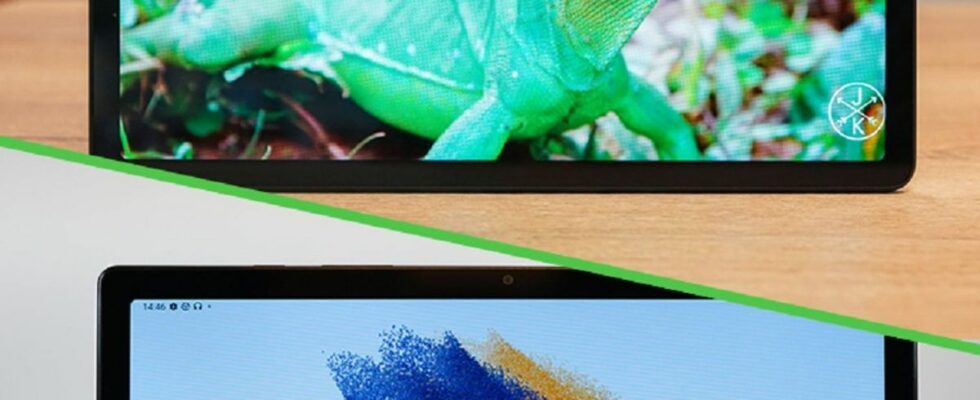The entry-level tablet market has picked up again and manufacturers are now able to offer us Redmi Pad and Tab A8, two slates that are intended to be affordable without compromising on quality. Samsung is a regular in this market, offering Galaxy Tabs at all price points, whose A models are often as effective as they are affordable. But if the name of the South Korean is reassuring, Xiaomi – a newcomer to the world of entry-level tablets – has assets to put forward to compete with it. We highlight them in this duel, which does not necessarily turn in favor of the product that we believe…
A more pleasant overall experience with the Redmi Pad
It is clearly not on the design that we can clearly declare a winner as the two models are well finished. We can note the more contained weight of the Redmi Pad or its screen occupying a larger part of the front face, but nothing really divisive.
It is on the side of the screen that the first clear differences appear, the Redmi Pad advancing with a better calibrated display, better contrast and above all equipped with a variable refresh between 60 and 90 Hz while the Tab A8 remains blocked at 60 Hz. Same trend on the performance side, the Xiaomi model distilling a better performance in game, because it makes better use of its panel and its higher refresh rate.
The Xiaomi Redmi Pad drives the point home with its larger 8000 mAh battery, making it more durable despite its more demanding screen. Finally, the Redmi Pad comes with a more powerful charger to refuel faster than its competitor.
You will understand, the Redmi Pad is the winner of this duel. She wins by grabbing ground on all fronts, ending up ultimately to a more pleasant overall experience whatever the use. The Galaxy Tab A8, far from being a bad tablet, is forced to bow to its younger rival.
